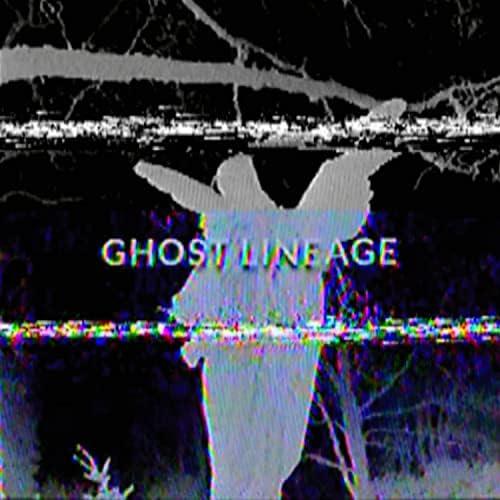Unveiling a New Genetic Lineage: Insights from Tibetan Ancestry
A recent pioneering study has revealed an intriguing genetic lineage, offering valuable insights into a mysterious population that once thrived in the harsh terrains of Tibet. By analyzing ancient DNA, researchers have identified this elusive “ghost” lineage, indicating intricate patterns of human migration and interaction in one of the planet’s most secluded regions. The results, published in Live Science, illuminate the enigmatic origins and demographic evolution of Tibet’s inhabitants, potentially transforming our comprehension of human evolution and cultural exchanges within this isolated area. As scientists delve deeper into our ancestral genetic fabric, these findings pave the way for further exploration into how ancient societies adapted to survive in extreme conditions.
Genetic Discoveries in Tibetan Ancestry
The latest research has unveiled significant revelations regarding the genetic heritage of Tibetans through advanced DNA analysis. This groundbreaking study highlights a previously unidentified lineage that captivates researchers and enhances our understanding of historical migrations. The discovery points to an ancestral group that has significantly influenced modern Tibetan genetics, reflecting a complex interplay among various ancient populations. Utilizing cutting-edge sequencing technologies to examine numerous DNA samples allowed scientists to uncover a ghost lineage, which could redefine our perspective on human history within this region as well as adaptation strategies for high-altitude living.
Key outcomes from this research emphasize the intricate nature of Tibetan ancestry with three pivotal observations:
- Diverse Migration Waves: Evidence suggests multiple migration events into Tibet, revealing varied origins among its current inhabitants.
- High-Altitude Adaptations: Genetic markers linked to adaptations for life at high altitudes were discovered, showcasing evolutionary responses to challenging environments.
- Cultural Exchanges: Interactions between early groups likely shaped dietary habits and cultural practices unique to the region.
The table below illustrates significant population groups contributing to contemporary Tibetan ancestry:
| Ancestral Population Group | Estimated Contribution (%) | Main Characteristics |
|---|---|---|
| Ancestral East Asians | 40% | Pioneers in high-altitude adaptation techniques |
| Southeast Asian Agropastoralists | 30% | Migratory traits enhancing altitude survival capabilities |
| Mysterious Ghost Population | 30% | Unique genetic markers absent elsewhere globally td> tr > |
Understanding the Ghost Lineage’s Role in Human Evolutionary History
The identification of a ‘ghost’ lineage through recent DNA analyses has reignited interest in unraveling human evolutionary complexities. This elusive group is believed to have flourished on the Tibetan plateau and adds depth to our understanding of early humans’ lives. Researchers employed sophisticated genetic methodologies to isolate this ghost lineage; evidence suggests it intermingled with early modern humans while contributing significantly to today’s genetic diversity. The implications are profound—this study may alter perceptions regarding how ancient populations adapted their lifestyles amidst extreme conditions while interacting with each other.
This research underscores how vital ancient DNA analysis is for uncovering hidden narratives within human prehistory. By pinpointing essential genetic markers associated with this ghost lineage, scientists are beginning to reconstruct migratory routes and survival strategies utilized by early humans across diverse landscapes. Such insights prompt inquiries about these populations’ roles in shaping contemporary human characteristics as well as their adaptability under challenging environmental circumstances—encouraging further investigation into unexplored lineages that may connect back toward known ancestors while creating an elaborate map detailing humanity’s evolutionary journey.
Future Research Directions on Ancient Human Migration Patterns
The revelation surrounding a ‘ghost’ lineage tied back to an enigmatic population residing historically within Tibet marks an exciting new chapter concerning human migration studies. Future investigations can greatly benefit by concentrating on several critical areas such as:
- < strong > Comparative Genomic Analyses: strong > Examining genomes from present-day Tibeteans alongside those derived from ancient sources will help reconstruct migration pathways over time .
- < strong > Archaeological Connections: strong > Aligning genomic data with archaeological findings can reveal cultural influences affecting migratory behaviors .
- < strong > Environmental Factors: strong > Studying climate variations might provide insight into how they impacted dispersal patterns along mountainous terrains .
< / li >
< / ul >Additionally , interdisciplinary collaborations will play an essential role moving forward , allowing experts across fields such as :
- < strong > Geneticists & Anthropologists : To enhance interpretations combining both biological data & cultural practices .
- < strong > Geographers & Climate Scientists : To model historical climates influencing migrations throughout time periods .
- < strong > Technological Experts : To apply innovative dating methods alongside advanced genomic sequencing technologies yielding more precise results .
< / ul >Research Focused Areas Potential Outcomes Total Genomic Studies Aiding mapping efforts related towards past migrations Total Archaeological Evidence Aiding comprehension around contextual cultures Total Climate Research Tying environmental shifts directly towards behavioral changes observed amongst communities
< / tbody > table >Conclusion: A New Chapter Unfolds In Understanding Our Past
The identification surrounding newly recognized ‘ghost’ lineages connected back towards long-lost populations residing historically upon rugged terrains found throughout Tibet opens up compelling avenues exploring genetics intertwined deeply rooted histories behind humanity itself! These revolutionary discoveries shine light onto complex tapestries woven together forming rich ancestries existing even today! As ongoing explorations continue unveiling connections linking mysterious lineages alongside present-day individuals alike; invaluable insights emerge not only pertaining specifically towards histories tied closely around regions like those found nestled amidst Himalayas but also broader trends encompassing entire scopes relating directly toward humankind’s evolution overall! Such implications invite further inquiry fostering discussions emphasizing dynamic natures inherent within scientific endeavors aimed deciphering puzzles left behind by ancestors who roamed freely across vast expanses once inhabited long ago!
